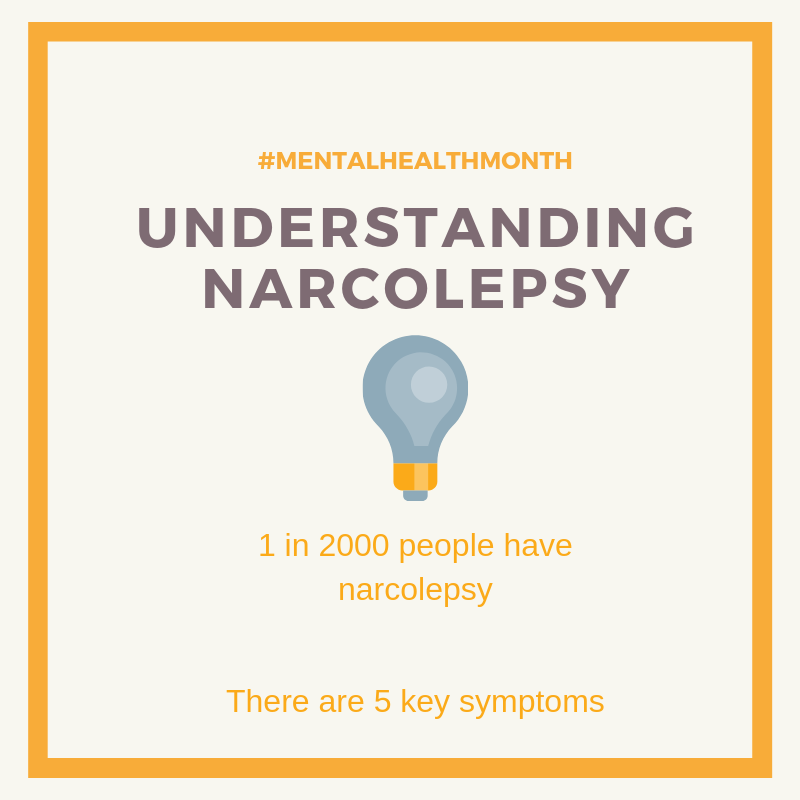
Understanding Narcolepsy: How, Why and Treatment
While sleep disorders might not be what we first think of when talking about mental health disorders, sleep is heavily implicated in our overall health and day-to-day well being. When our sleep routine and quality changes, it can affect our bodies in negative ways. One of the most common symptoms of various mental health disorders is a change in sleeping patterns, whether it is an increase or decrease in sleep quantity or quality. One of the five major sleeping disorders is narcolepsy.
How and Why
Narcolepsy is characterized by excessive sleepiness, hallucinations, and uncontrollable muscle spasms. The most common behavioral symptom of narcolepsy is suddenly falling asleep in the middle of events, class, work or more. There are two types of narcolepsy; one with and one without the symptom of cataplexy. Cataplexy is when a sudden burst of emotion causes someone to physically collapse from loss of muscle control. Individuals are fully conscious during a cataplexic event, which is what makes it different from a seizure and other seizure disorders.
Research into the many causes of narcolepsy are still being studied so as to understand the precise mechanism that the disorder evolves through. Narcolepsy has been tied to autoimmune disorders, family history, and in rare cases, brain injuries in areas that control sleep and wakefulness. Autoimmune disorders that are caused by imbalances in the immune system seem to lead to cell loss in critical parts of the brain that impact cataplexy. Family history of narcolepsy suggests that there is a genetic component in how the disease is inherited; however, this is not the case for most narcolepsy cases that evolve sporadically.
Diagnosis and Treatment
There are two ways to diagnose narcolepsy: polysomnogram or multiple sleep latency test. A polysomnography measures brain and muscle activity and different measures that are indicators of quality of sleep. These measures are often used to evaluate individuals and their propensity for sleep disorders. The Multiple Sleep Latency Test studies one of the most poignant symptoms of narcolepsy, daytime sleepiness, and assesses the ability of an individual to fall asleep quickly and how quick the onset of REM sleep is. If these measures fall between a certain range and exhibits symptoms that are studied during the polysomnography, an individual is considered to have narcolepsy.
There are many different avenues of treatment for this disorder, because it can have manifestations and causes from individual to individual. Usually a combination of medication and lifestyle changes can be used to manage the many symptoms of the disorder. Due to the many possible imbalances that could be causing narcolepsy one might be given something like a central nervous system stimulant (Modafinil) to something frequently prescribed for depression like SSRIs. Each case is different, which is why it is important to work with a professional when finding a medication that will work.
Lifestyle changes that help reduce and manage symptoms are taking short naps throughout the day, avoiding caffeine, smoking, alcohol and large meals, as well as keeping a regular sleep schedule. These lifestyle changes that can help people struggling with other mental health disorders. While it can be difficult to maintain, having adequate social support can help maintain these habits and help people manage their illness.
If you or someone you know is struggling with a mental health issue, please feel free to contact the professional team at Lifeline Connections for help! Getting yourself help, whether it is through self-help or by reaching out to professionals is an important part of recognizing that you are struggling and is a good step forward to get the help that you need. You can visit
Lifelineconnections.org or call 360.397.8246 for more information.
Source:
https://www.ninds.nih.gov/Disorders/Patient-Caregiver-Education/Fact-Sheets/Narcolepsy-Fact-Sheet
